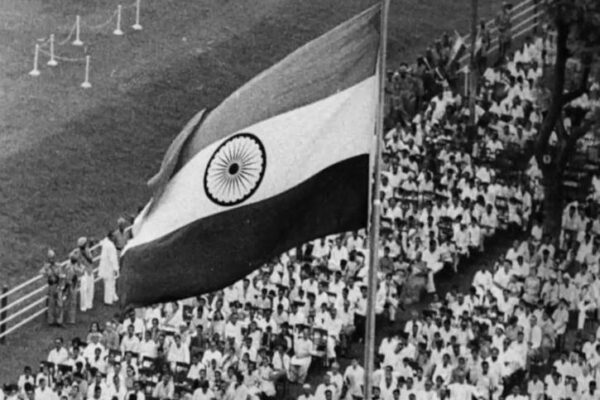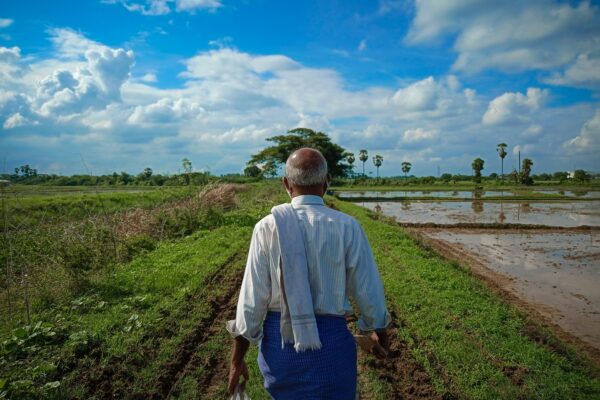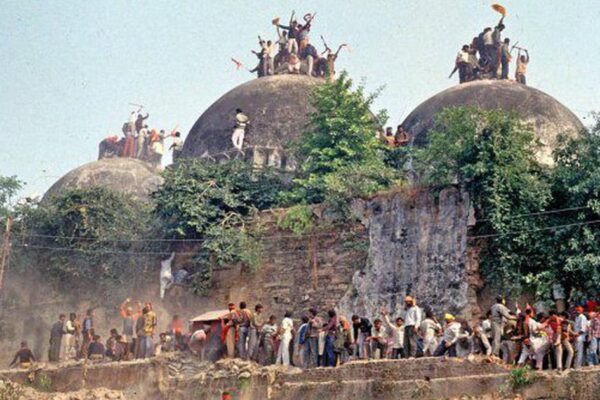As Indian mainstream media and social media dances to the tune of Brahminical narratives keeping the general populace under an illusion of ‘normalcy in Kashmir’, militancy in Kashmir is rising. It has to be kept in mind that all this is happening even after the deployment of nearly a million of armed military personnel.
As Indian mainstream media and social media dances to the tune of Brahminical narratives keeping the general populace under an illusion of ‘normalcy in Kashmir’, militancy in Kashmir is rising. It has to be kept in mind that all this is happening even after the deployment of nearly a million of armed military personnel.
On 5th August 2019, Article 370 of the Indian Constitution was struck down. According to it, Kashmir had a semi-autonomous tag. Kashmir’s constituent assembly had powers on everything except communication, defense, and external affairs.
Since August 5th, 2019, the valley has been under a shutdown which has destroyed its economy, people’s right to the internet, and even life. The valley would become the ‘longest-serving surveillance state’ on 5th August 2020 when it enters its first year as a Union Territory downgraded from a semi-autonomous state.
‘Paradise on earth’ was the nickname of Kashmir given to it because of its beauty. The beauty of the valley prompted its fame and a war of prestige between two countries has turned it into a hell. Now, it is one of the most unsafe places in the world to live in (The Guardian, 2019).
Background
In 1947 when India became independent, it was partitioned into two countries. The partition was based on communal lines. The Muslim dominated Sindh and Punjab along with southern Bengal was made into a separate country called Pakistan. The Hindu religion dominated region came to be called India. The architect of Pakistan, Muhammed Ali Jinnah, crafted the country to be an Islamic country. Later, due to regional and cultural differences, the Southern Bengal which was called East Pakistan then revolted against Pakistan’s influence over the region. The revolt saw India getting into the scene and the war of 1971 resulted in East Pakistan becoming a separate country called Bangladesh. The war is perceived according to the political comfort of each country.
Kashmir was a Muslim dominated territory. After 1947, the ruler of Kashmir, Raja Hiren Singh, opted to remain independent from both India and Pakistan. He managed to sign an agreement with Pakistan for free trade and commerce while India opted to stay away from any such agreements. In 1948, the borders between India and Pakistan again began to flare up with the bitter memories of Partition.
Some insurgent groups from Pakistan entered Kashmir during this time, making Kashmiris anxious. Raja Hiren Singh asked India’s help to tackle the insurgent problem. The then Prime Minister of India, Jawaharlal Nehru, agreed to help but on one condition that Kashmir should become a part of India. The Raja had no other option so he agreed. It remains a point of contention between historians as to whether this happened before or after the Indian army entered the valley. Pakistan and India had their perspectives regarding it. The truth is somewhere else.
The war ended with the UN peace agreement with Pakistan and India agreeing to keep their occupied territories then and to not to interfere in each other’s occupied territories of Kashmir. In 1965, the two countries again fought with each other when some Pakistani troops entered into Kashmir administered by India.
The cordial relations between Sheikh Abdullah (the first Chief Minister of Jammu and Kashmir) and Jawaharlal Nehru prompted the Kashmiri faith in India. Sheikh Abdullah was a prominent and popular figure whose repeated incarcerations by India during and after 1954 strained their relations. After he died in 1982, non among his party or family could win over the faith of Kashmiris.
After the second episode, diplomacy made way for an agreement with the two countries which managed to open a trade relationship between the two. However, in 1987, election results made the local Kashmiris suspect wrongdoing. As days went on, pieces of evidence of a rigged election scenario made Kashmiris frustrated. In 1989, the frustration took a strong turn. With Pakistan’s public backing, it spiraled into a strong collective agitation. Revolts broke out in Kashmir valley with the police reverting to violent suppression. Historians cite 1989 to be the point were separatism took hold of the valley.
In 1999, the two sides engaged in a war for the third time based on Kashmir. This time at the Shia dominated area called Kargil. After the war, diplomatic backchanneling prompted an improvement in relations. From 2004 to 2014, the disenchantment in Kashmir prompted a continuing militancy in the valley but to a limited extent compared to the former years.
In 2014 and 2015, there were some goodwill gestures from both sides. However, 2016 proved them to be mere theatrics. In 2016, Burhan Wani, a militant of Pro-Pakistan Hizbul Mujahideen, was shot dead. This spiraled into a violent agitation in Kashmir as Kashmiris regarded Wani as their blood. He was a Pro-Pakistan militant but his history — by then a part of local Kashmiri folklore — made them empathize with him. He was molded into a militant by the atrocities of the Indian Army in the Valley. Since, 2016, Kashmir has been boiling and the Indian Government of RSS-BJP made violent oppression the new norm in Kashmir.
On August 5th, 2019, after a breathtaking victory for the extreme rightwing RSS-BJP, they started to explicitly implement their Brahminical-Aryan Supremacist world view. Kashmir was a point of contention for this worldview. The Brahminical space was always wary of Kashmir and they dreamed of a day when they would take their ‘revenge’ upon Kashmiris for being a Muslim dominion and for their semi-autonomous status. They did it by downgrading a semi-autonomous state into a union territory directly controlled by the Indian Government.
Before this development, Jammu & Kashmir was put on a stronghold curfew. All their mainstream political and religious leaders were put under detention or house arrest without them even aware of what is going on. The Indian Army was deployed in the region in large numbers. All forms of communications, including mobile and internet connection, was shutdown. One year down the line, the shutdown continues with many of the leaders still under detention.
Kashmiri Side of the Story
Indian mainstream media is as biased as ever. They work as if their existence is for propagating an extreme right-wing narrative or a Brahminical perspective. Neither is Pakistani media reliable, which is just another counter-part of Indian mainstream media. To understand the Kashmiri side of the story, one needs to delve into the reality of the valley.
On 5th August 2019, Kashmir was bifurcated into two Union Territories (UT). They were Jammu & Kashmir and Ladakh. The bifurcation is part of a larger agenda to alienate and disorient the Kashmiri identity. Ladakh is a hilly terrain where 3,00,000 people live. The majority of them Practise Buddhism. The newly formed UT of Jammu & Kashmir can again be classified into three regions, the Sunni Muslim dominated Kashmir Valley, the Shia-Muslim dominated Kargil region, and the Hindu dominated Southern part called Jammu. Earlier, there was one Kashmir – now the communal divisions have risen owing to the success of RSS-BJP’s propaganda machinery.
Jammu is an RSS-BJP bastion that revels in spewing hate towards the Muslim dominated Kashmir valley. The Buddhist dominated Ladakh was sold an artificial dream in which they were financially secure, with higher position, money, and power which according to the RSS-BJP’s narrative, was deliberately held back by the ‘bestial’ Muslims of Kashmir Valley. Owing to the inherent difficulty of the terrain for sustaining their livelihood, the people of Ladakh gave into the narrative. Kargil, being a Shia-dominated place, was where the RSS-BJP tried to capitalize on the global Sunni-Shia divide. RSS-BJP’s Brahminical narrative, however, couldn’t find the anticipated support there. Many of them remained neutral and some of them supportive of the ‘bestial’ Kashmir valley (the term ‘Muslim’ is deliberately omitted here as RSS-BJP’s narrative for Kargil was specially cut out to lure Shia Muslims).
The interactions with Kashmiris by Al-Jazeera’s reporters bring to the fore of what a Kashmiri is fighting for. They are fighting for self-determination away from India and Pakistan. They want freedom from the religious fanaticism of both India and Pakistan. They dream of a valley where their daughters can attend colleges, strive, and excel in life. A liberal society once, Kashmiri parents now fear for their daughter’s safety as Kunan Poshpora of 1991 and numerous other atrocities weigh them down.
Kashmiris dream of financial security which has been destroyed by the one year shut down (Rs. 14000 crores of financial loss is estimated during 2019–2020). Employment, healthcare, and education are paralyzed (Kashmir was 11th in the Human Development Index before 2019). Indian state’s cruelty has made them angry (pellet guns are weapons used only in Kashmir by the security forces in India. It has been used against everyone including innocent civilians. Even women and children are not spared).
According to the UN lead peace accord of 1948, Kashmiris through the constituent assembly have to decide whether they want to join India or Pakistan or remain as an independent country through a plebiscite. After 72 years, the plebiscite is yet to happen, and a once united Kashmir has been unjustly bifurcated. They have been betrayed by their mainstream politicians and the Indian Government over the years for delaying the plebiscite. They are angry with the Pakistani state for using them as pawns.
RSS-BJP deceived and destroyed their dreams by striving to shatter their identity through state-sponsored violence. As Indian mainstream media and social media dances to the tune of Brahminical narratives keeping the general populace under an illusion of ‘normalcy in Kashmir’, militancy in Kashmir is rising. It has to be kept in mind that all this is happening even after the deployment of nearly a million of armed military personnel.
Once disenchanted Kashmiris are now fuelled by hatred and anger, living with an unextinguishable fire burning inside them for vengeance against the Indian and Pakistani states. Whether the Indian and Pakistani states like it or not, Kashmiris are stronger today than ever before and the struggle for self-determination will continue: “That which does not kill us makes us stronger” (Friedrich Nietzsche).
References
Timeline: India-Pakistan Relations
Jammu and Kashmir: Government and Society





